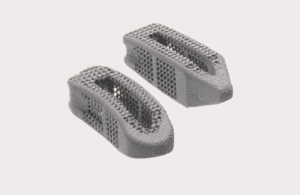 Orthofix (NSDQ:OFIX) today said it received FDA 510(k) clearance for its Forza Ti TLIF spacer system.
Orthofix (NSDQ:OFIX) today said it received FDA 510(k) clearance for its Forza Ti TLIF spacer system.
The Forza Ti spacer is designed to optimize transforaminal lumbar interbody fusion (TLIF) procedures, according to the company. It has a titanium 3D-printed interbody with porosity and surface that allows bones to grow into and through the spacer.
Interbody implants are typically inserted between the vertebrae during a spinal fusion surgery to help relieve pressure on nerves and to hold the vertebrae in place while fusion occurs.
“The 3D-printed surface technology, titanium material, and implant design all play a role in the bone growth process during fusion,” Gary Rosenberg, an orthopedic spine surgeon operating at Orange County Global Medical Center in Santa Ana, Calif. who performed the first Forza Ti TLIF spacer patient implant procedure, said in a news release. “The intuitive instrumentation allows for easy insertion, and the optimized porosity and surface features support our goal of fostering bone growth in order to aid with the patient’s fusion.”
Forza Ti TLIF spacer system also features endplates with 400-micron pores; functional gradient porous structure with 80-percent porosity at the midline of the implant which allows for increased fluoroscopic visualization; large open graft window for packing bone-grafting material; bulleted nose and straightforward instrumentation.
“Following quickly behind the recent launch of our new cervical interbody, the Construx Mini Ti Spacer System, we are excited to introduce our newest 3D-printed titanium lumbar interbody system,” Orthofix president of global spine Kevin Kelly said. “The result of our intense focus on bringing solutions to market to meet the current needs of surgeons, the Forza Ti TLIF Spacer System with our innovative nanovate technology will be a key differentiator for surgeons. It will provide access to advanced fusion technology backed by studies that support the proven biological effects of nanoscale features applied to interbody devices.”